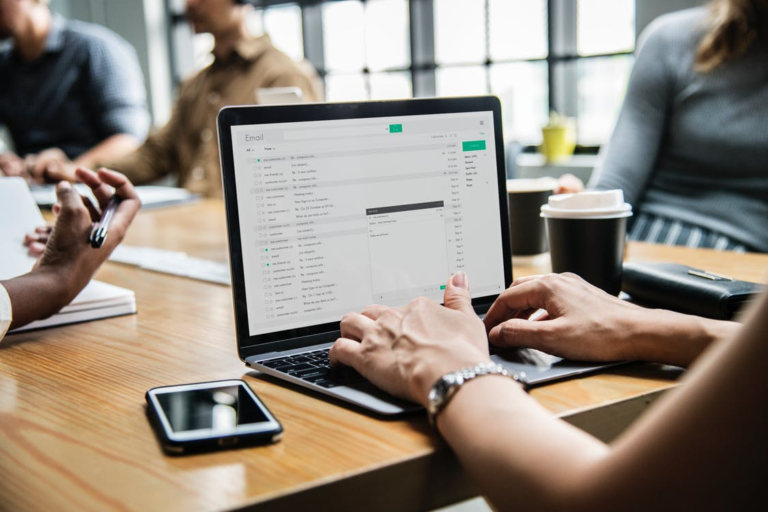We’ve spent the last couple of weeks delving into how to improve your productivity with the processing and organizing workflow described in David Allen’s Getting Things Done book on the subject. One of the concepts we covered was the notion of an inbox, at which time we described this as “anything that demands your attention, which can be literally your email inbox, or it can be the physical mail you receive, your app notifications, voice or text messages, reminders, goals in the back of your mind, and more.” Today, let’s take a closer look at the first item on that list, the literal email inbox.
A Little History
Email (i.e. electronic mail) has been around since the early 1960s, back when time-sharing computers were common and even before ARPANET, the forerunner of the modern Internet we all enjoy today. Yes, that means email is actually older than the Web, and certainly older than the personal computers and smartphones we use to access our messages. In this sense, email might as well be as antiquated as a switching system at the phone company. (Those systems still exist, actually: they’re around almost purely for another bygone technology: the fax machine.)
A Past-Time of Pain
Anyone who’s ever tried to set up email on a modern device, like a smartphone or tablet, knows what a pain this can sometimes be, especially if you’ve ever found yourself having to enter port numbers or server addresses. Even aside from that, your email client might sometimes stop working for reasons unknown, prompting you to fidget with it over and over to resuscitate it, or forcing you to surrender to simply removing the account from your device and reentering all that setup information again. And even if you’ve been blessed to not run into these issues, you’ve certainly seen junk messages, scams, chain letters, and the like.
A Technology Lost in Time
Given how finicky this mid–20th-century technology is, it’s no wonder many have tried to replace it. Companies like Slack Technologies have developed tools like its eponymous software (which stands for Searchable Log of All Conversation and Knowledge, apparently) to replace both email and instant messaging. And while programs like this have found some success, email hasn’t exactly gone anywhere, nor will it anytime soon. It’s ubiquitous and far too entrenched into the everyday business of our Internet lives. Like the narrow streets designed for horses that we see in old cities, it’s much easier to convert them to one-way roads than to move buildings out of the way, even if extra lanes would fix so many other problems.
In sum, email was never designed to be the kind of productivity tool we all use it for these days. But since we have to live with it, it’s important that we use it in a way that serves us, not the other way around. In other words, we must not be slaves to our inboxes.
Taking Control
There’s a concept called Inbox Zero that was developed by blogger and podcaster Merlin Mann in the early 2000s, a superset of ideas for Allen’s Getting Things Done, but with a specific emphasis on taking control of your email and the goal of keeping it empty. As he states on his website, “’Productivity’ isn’t about making more widgets per hour or being efficient and organized for its own anal-retentive sake. Real productivity means getting faster at moving the crap off your desk so you can have room to focus on the creative work that only you can do.”
Just as you would tackle anything else with that processing and organizing workflow, you should take each email message and make an immediate decision: delete, delegate, respond, defer, or do it. Don’t just let messages sit around in your main inbox where they can distract you again and again throughout the day. To that end, you would be wise to not even leave your email client open. This might sound crazy, but the truth is that you have to remember it’s there for your convenience, not others’. Instead of leaving it open and jumping back to it every time you hear that notification bell, designate different times of day to check it. This can be as often as the top of each hour, or it can just be in the mornings if you want to minimize all possible distractions throughout the day.
As you go through your list of emails, try to discard as many as possible first and foremost. Ads, spam, social networking notification emails, and so much more just don’t deserve your attention. Get rid of them. If you’re going to take any extra time on them whatsoever, it should be to scroll to the bottom of those messages to locate their Unsubscribe links.
For emails that can be best handled by someone else, forward it and move on to the next one. For messages that only require quick replies (less than 2 minutes, just like in the workflow), do those right away so they’re not cluttering more important tasks. For the messages that require research or a long response, move those to a special folder that you only process at a special time of day. (Maybe only in the mornings, or right after lunch.) Or, if you have an open block of time that day, you can always chip away when there’s nothing else..
Use the Right Tool for the Right Job
As you can see, the processing and organizing workflow works especially well with email. Just avoid using your email client for task management. It’s okay to have that “respond later” folder, but when it comes to actually planning out your day, you should make use of scheduling software, a calendar, a to-do agenda, or something similar, namely so you don’t find yourself browsing around that email client when you shouldn’t be. Remember, the aim is to reduce distractions so you can achieve maximum productivity.
There are numerous resources out there on this subject, including David Allen’s and Merlin Mann’s aforementioned works. For hands-on, step-by-step training and evaluation, however, look no further than The Brandt Group. We’re here to help you maximize your business’s efficiency, and we can do so with productivity training, leadership development, and—of course—mystery shopping to evaluate how all of that hard work is translating into sales and customer service. Put contacting us on your to-do list and let’s get started!




Recent Comments